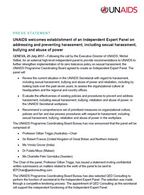Involving Men to Improve Maternal & Newborn Health
Извор: WUNRN – 18.07.2018
Background
Emerging evidence and program experience indicate that engaging men in maternal and newborn health can have considerable health benefits for women and children in low- and middle-income countries. Previous reviews have identified male involvement as a promising intervention, but with a complex evidence base and limited direct evidence of effectiveness for mortality and morbidity outcomes.
Objective
To determine the effect of interventions to engage men during pregnancy, childbirth and infancy on mortality and morbidity, as well as effects on mechanisms by which male involvement is hypothesized to influence mortality and morbidity outcomes: home care practices, care-seeking, and couple relationships.
Method
Using a comprehensive, highly sensitive mapping of maternal health intervention studies conducted in low- and middle-income countries between 2000 and 2012, we identified interventions that have engaged men to improve maternal and newborn health. Primary outcomes were care-seeking for essential services, mortality and morbidity, and home care practices. Secondary outcomes relating to couple relationships were extracted from included studies.
Results
Thirteen studies from nine countries were included. Interventions to engage men were associated with improved antenatal care attendance, skilled birth attendance, facility birth, postpartum care, birth and complications preparedness and maternal nutrition. The impact of interventions on mortality, morbidity and breastfeeding was less clear. Included interventions improved male partner support for women and increased couple communication and joint decision-making, with ambiguous effects on women’s autonomy.
Conclusion
Interventions to engage men in maternal and newborn health can increase care-seeking, improve home care practices, and support more equitable couple communication and decision-making for maternal and newborn health. These findings support engaging men as a health promotion strategy, although evidence gaps remain around effects on mortality and morbidity. Findings also indicate that interventions to increase male involvement should be carefully designed and implemented to mitigate potential harmful effects on couple relationship dynamics.
Figures
http://journals.plos.org/plosone/article?id=10.1371/journal.pone.0191620
Website Includes Full Documentation
Also Via SVRI – Sexual Violence Research Initiative

